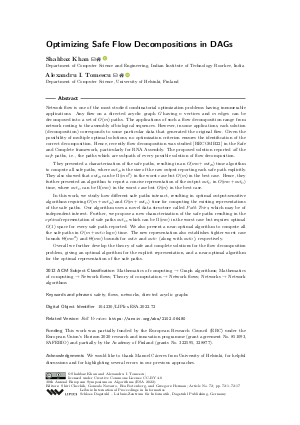LIPIcs.ESA.2022.72.pdf
- Filesize: 1.25 MB
- 17 pages

 Creative Commons Attribution 4.0 International license
Creative Commons Attribution 4.0 International license















Feedback for Dagstuhl Publishing